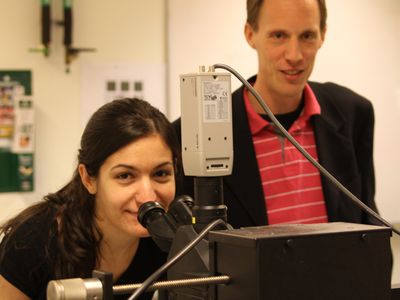This course introduces the most important semiconductor components that are used in the modern electronics. We focus on the MOS-transistor, pn and schottkydiodes and different types of memory cells. Furthermore, solar cells, photodiodes and light-emitting diodes are included. In the course, power consumption and gate delay in CMOS-based circuits are discussed. An overview is given of the development of so-called technology nodes for advanced CMOS according to Moore's law. You should be familiar with the process flow that is used to produce modern microelectronics. Strong emphasis is placed on sustainability aspects such as energy consumption and finite resources.
IH1611 Semiconductor Devices 7.5 credits
This course has been discontinued.
Last planned examination: Spring 2025
Decision to discontinue this course:
The course was given for the last time in Spring 2022. The last opportunity for examination in the course is given in Spring 2025.
Examination under the discontinuation period is carried out within the framework of the course IL2240.
Students can follow parts of the teaching in IL2240 to repeat.

This course introduces the most important semiconductor devices that are utilized in modern electronics. We focus on the MOS-transistor, pn- and Schottky diodes and various types of memory cells. We also cover solar cells, photodiodes and light emitting diodes. In the course we discuss power and gate delay in CMOS-based circuits. An overview of the evolution of advanced technology nodes for CMOS according to Moore's law is provided.
You will become familiar with the process and manufacturing flow that is used for moden microelectronics. A special focus is placed on sustainability aspects, including energy usage and limited resource supply.
Information per course offering
Course offerings are missing for current or upcoming semesters.
Course syllabus as PDF
Please note: all information from the Course syllabus is available on this page in an accessible format.
Course syllabus IH1611 (Autumn 2023–)Content and learning outcomes
Course contents
Intended learning outcomes
After passing the course, the student shall be able to
- describe the electronic band structure for insulators, semiconductors and metals qualitatively
- use the concepts electron- and hole-concentration, bandgap and mobility for calculations of current-voltage relations in semiconductor components
- analyse and calculate the internal electrostatics (charges, electric field and potential) in semiconductor components based on pn- and MOS-structures
- describe the function and the application areas for the pn-diode, the MOS-transistor and common types of memory cells and some kind of semiconductor sensor
- describe the basic properties for CMOS-inverters and how these are used to implement integrated circuits.
- give an account of the most important sustainability aspects in production of modern microelectronics.
Literature and preparations
Specific prerequisites
- Knowledge in electrostatics, 3.5 higher education credits, equivalent completed examination module TENE in EI1220 or completed course EI1320/HE1200.
- Knowledge in algebra and geometry, 7.5 higher education credits, equivalent to completed course SF1624.
- Knowledge in one variable calculus, 7.5 higher education credits, equivalent to completed course SF1625.
- Knowledge in multivariable analysis, 7.5 higher education credits, equivalent to completed course SF1626.
- Knowledge in electrical circuit analysis, 9 higher education credits, equivalent completed course EI1110 or knowledge in basic electromagnetism, 7.5 higher education credits, equivalent completed course SK1115.
Active participation in a course offering where the final examination is not yet reported in LADOK is considered equivalent to completion of the course. Registering for a course is counted as active participation. The term 'final examination' encompasses both the regular examination and the first re-examination.
Literature
Examination and completion
Grading scale
Examination
- SEMA - Seminar, 1.5 credits, grading scale: P, F
- TENA - Written Final Exam, 4.5 credits, grading scale: A, B, C, D, E, FX, F
- LABA - Laboration, 1.5 credits, grading scale: P, F
Based on recommendation from KTH’s coordinator for disabilities, the examiner will decide how to adapt an examination for students with documented disability.
The examiner may apply another examination format when re-examining individual students.
If the course is discontinued, students may request to be examined during the following two academic years.
Examiner
Ethical approach
- All members of a group are responsible for the group's work.
- In any assessment, every student shall honestly disclose any help received and sources used.
- In an oral assessment, every student shall be able to present and answer questions about the entire assignment and solution.